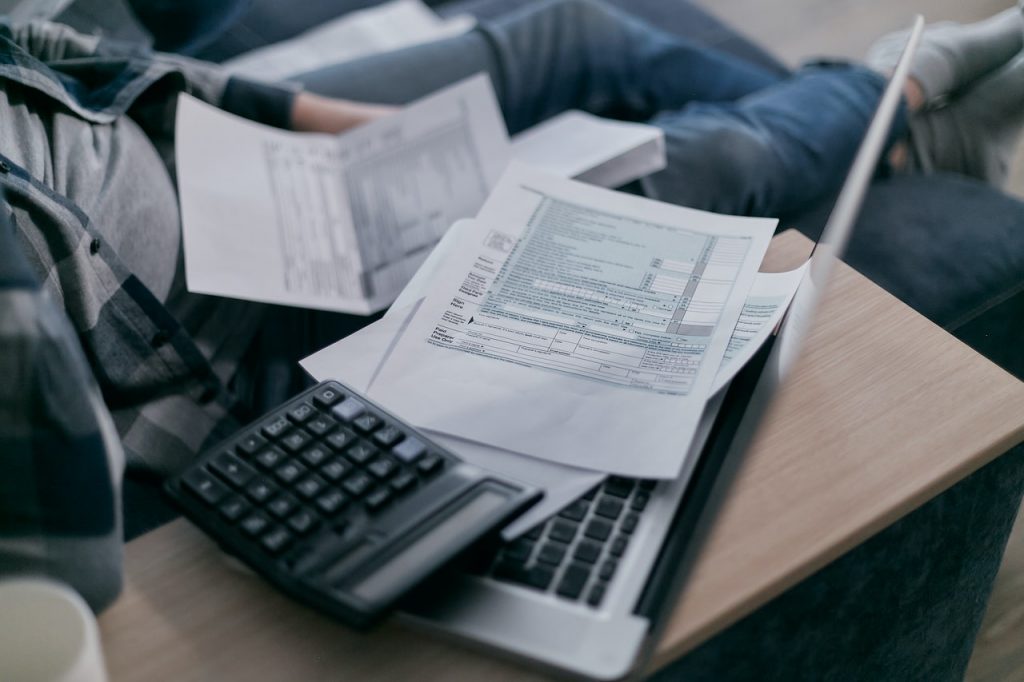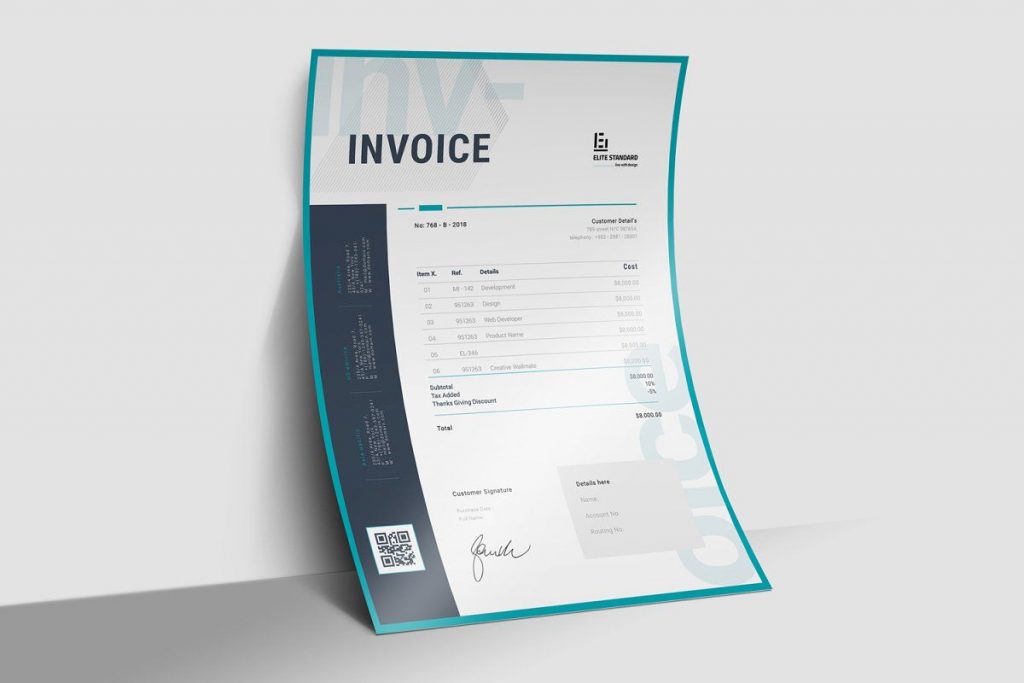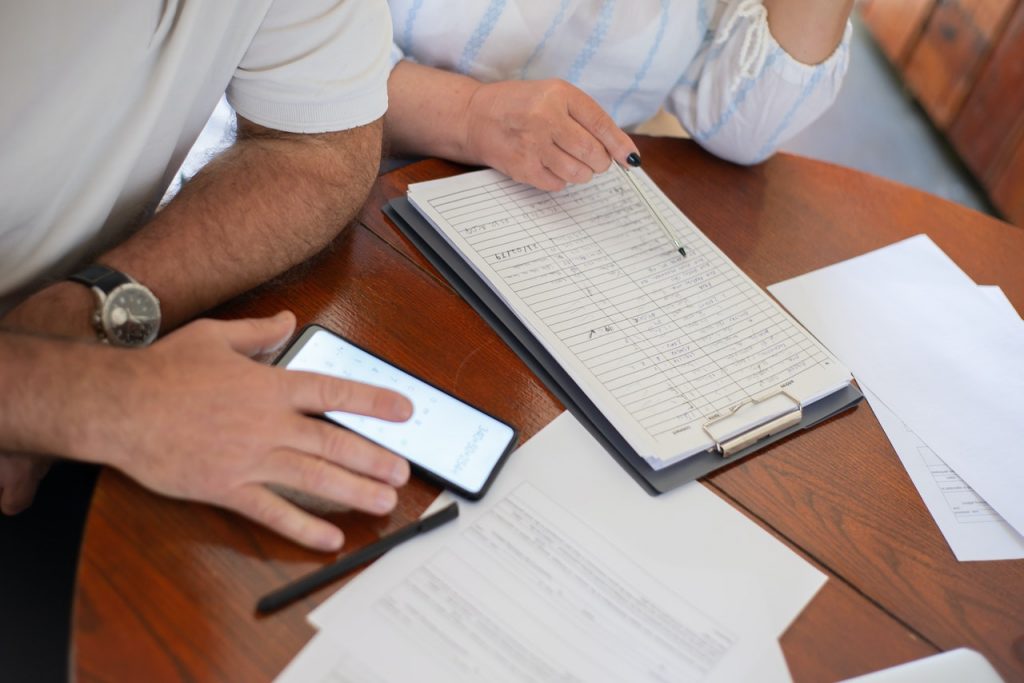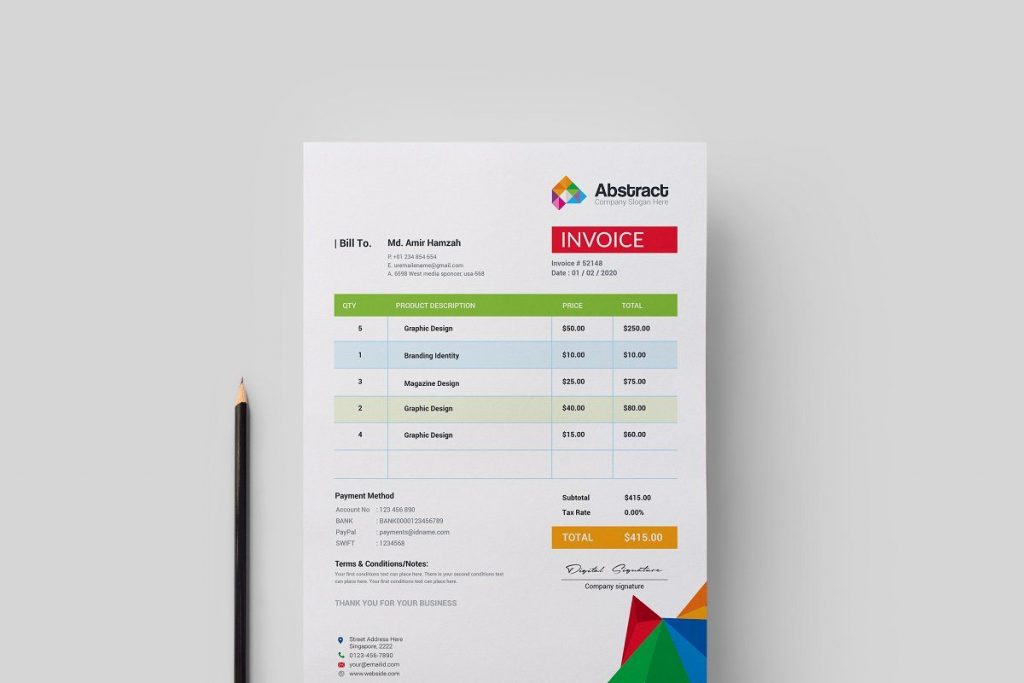
Whether you’re a freelancer or you own a store that sells products, more often than not, when working with customers and clients, you’re going to need to send invoices. Every business, no matter how small or large needs a professional and unique invoice template. You may wonder, what’s so unique or professional about a simple receipt? Well, if that’s how you feel, then you should really read the rest of this article.
Designing an invoice isn’t as simple as you might feel. You can’t just send a bill to your client without any context clues or additional information. Every invoice needs several details to make it look professional and that’s exactly what we’re going to talk about today. We’re going to go through the invoice designing process, step-by-step, until you’re left with a finalized, professional-looking invoice that is guaranteed to make your clients stop and stare. On that note – let’s get started!
1. Look For Inspiration

If you’ve never designed anything before, it can be quite tough to begin. The blank sheet of paper is just staring at you and you have no clue what you want to do with it. However, don’t worry – that happens to everyone. Even the greatest designers on the planet struggle with it – more often than you might think. However, what they do in those moments is they go online and look for ideas and inspiration. You can start with websites like Pinterest or just by simply looking up professional invoices online and working your way from there. As designers like to say – good designers work from imagination, but great designers steal. So, be great!
2. Draw Up A Rough Sketch
Once you’ve found your inspiration and you have a general idea of how your invoice should look, grab a pen and paper and just start sketching. It doesn’t matter how the sketch will turn out to be, you just need it for reference and to see how everything will work together. Add all the elements you want, play around with the stuff you’ve found online and just sketch. Once you’re done with the sketch, you should be left with a pretty rough, but very substantial base for the rest of your invoice designing process.
3. Set Up The Size

Before you begin designing the invoice, you have to set up the actual structure of the document. You’ll want to start with standard invoice margins – 8.5 x 11 inches. That is the standard format for this kind of document and it should be more than enough with what you’ve had in mind and it should give you more than enough room to put in all the necessary information on there.
Now, you might wonder, why are the dimension important when most of this stuff is digital nowadays. Well, aside from it looking the par, it’s also quite useful if you’re working with clients that like to print out physical copies of their financial documents.
4. Use A Template
Now, if you’re not experienced or you just can’t be bothered to design the whole thing all by yourself, you can scratch the previous three steps and just use an invoice template. You see, according to Billdu, using a pre-built template makes designing the invoice much easier. If you’re using a template, you’re not starting from scratch. Instead, you’re starting from 80% of the job already done and the only thing that’s left for you to do is to make an executive decision on what you do and don’t like, add some adjustments and customizations here and there and you’re pretty much done.
Not only that, when you’re working from a template, you can be certain that you won’t miss on any important aspects of the invoice, as people who have made the template already know what an invoice should contain, so, that’s one less thing to worry about.
5. Make It Your Own

Now, whether you’re using a template or you’re designing your own invoice from scratch – your goal should always be to make your own. Make the invoice undeniably yours. Make it memorable and recognizable. Basically, what we’re saying is – brand it.
Yours or better yet, your company’s touch should be all over it. A professional invoice will be tastefully branded to represent the business and the company it stands for. You see, these aren’t just plain, financial documents. No. Invoices are also a great opportunity to spread brand awareness and convey a sense of personality and professionalism to your customers and clients.
Just think about it, in one hand, you’re holding a plain, white piece of paper with black text and in the other, you’re holding a fully customized invoice with your logo and brand colours on it – which one would you choose? We certainly hope you’d choose the customized one as your clients most certainly would.
6. Make It Simple
Now, don’t go overboard with the customizations. A simple brand-related colour scheme and a logo should be more than enough to make the invoice stand out. Don’t try and reinvent how this document should look. There are certain rules you should abide by, like making your text readable and having it in the right place, but readability always comes first. Your clients must be able to read what they’re being charged for, otherwise, you’re not getting your hard-earned money. On top of all that – here’s what an invoice should contain.
- Business’s name and contact detail
- Client’s name and contact detail
- An invoice number
- An itemized list of charges (descriptions, quantities, individual price etc.)
- Payment details (total, due date etc.)
7. Make Payment Details Stand Out

Considering how the primary purpose of this document is to bring you money, make sure the payment details stand out from the rest of the document. In general, you’d do this by making the payment details slightly larger and differently coloured. That’s the easiest way to make something stand out in an otherwise uniform document. Naturally, you won’t make it too large or obnoxiously coloured. Instead, you’re going to keep it professional – as we’ve done so far with all the rest.
There you have it. As you can see, it’s not that hard to design a professional-looking invoice, but it’s also not the simplest task in the world. Hopefully, we have managed to make the process easier for you and that you’ll do a great job with designing your own invoice.









